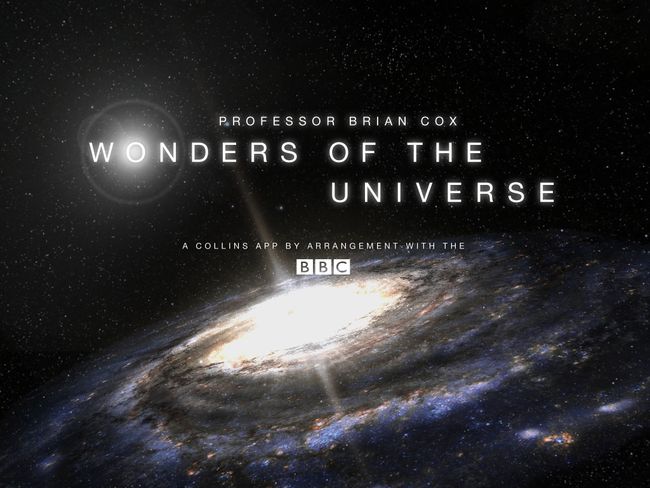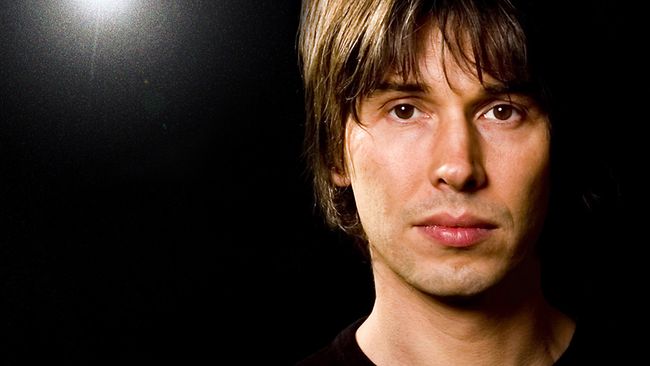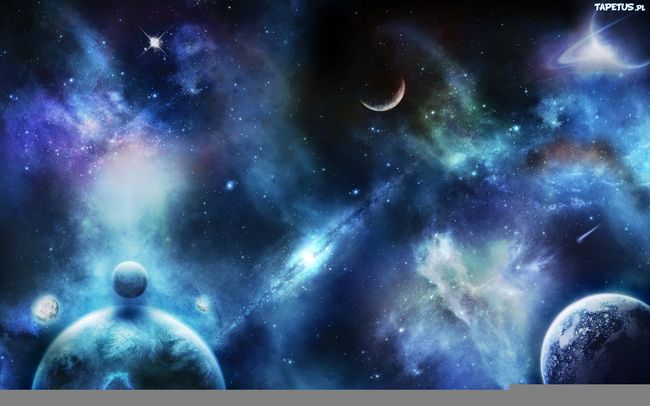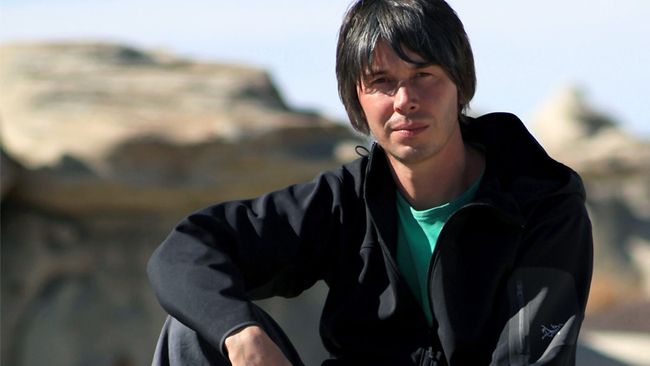中文片名:宇宙的奇跡
英文片名:Wonders of the Universe
導 演:克裏斯·霍爾特(Chris Holt)
主 演:布萊恩·考克斯(Brian Cox)
主題音樂作曲家:謝裏丹·唐(Sheridan Tongue)
執行制片人:喬納森·雷諾夫(Jonathan Renouf)
上映時間:2011年3月6日至3月27日
出品時間:2011年03月06日
原始版本:BBC HD: 1080i
發行公司:英國廣播公司(BBC)
制片地區:英國
類 型:紀錄片
對白語言:英語(外掛中文字幕)
集 數:4 單集
單集片長:60分鐘
劇情介紹
中文介紹
《宇宙的奇跡》由布萊恩·考克斯教授帶我們用物理學揭開種種宇宙奇跡的奧秘,闡釋人類和宇宙的深邃聯系。他訪問全球某些最引人注目部分解釋的基本原則所支配的自然規律——光、重力、能量、物質和時間。在他的心中與世界上最高深的科學碰撞,宇宙的奇跡揭示人性的故事,是與自然緊密地交織在一起,也是宇宙起源的複雜的故事。
布賴恩·考克斯教授歸來了,他將帶領我們穿越時間與空間,開始一段充滿真知灼見而又令人興奮的旅程:你會見證那個137億年之久,930億光年之廣,1000億個星系星羅棋布,而每個星系又包含著千億、萬億顆恒星的無法想象的龐然大物。
我們把這個地方稱作我們的宇宙。它是如此廣闊,如此複雜,幾乎無法想象它能被人類所了解。然而在過去的100年裏,科學家們開始認識宇宙,開始將宇宙看似無窮無盡的複雜性化簡成人類能夠理解的知識,並總結出適用於所有時間、所有地點中的所有事物的自然規律。由於這些規律適用於所有時間、所有地點中的所有事物,考克斯教授將會用地球上我們所熟悉的事物,為我們解釋甚至帶我們體驗深空中那些宏大而深奧的現象,將那個變幻莫測、不可思議的宇宙帶入活生生的現實。
考克斯教授一生致力於認識我們的宇宙。關於我們自己,關於我們所生活的世界,我們有許多深刻的問題需要回答。在這《宇宙的奇跡》中,他決心用一種特殊而易於理解的方式為這些問題尋找答案。
英國最新研究以99.996%的可能性證實了宇宙暗能量的存在,這如同上帝粒子被發現一樣,它們的存在對生活毫無影響,卻足以令全球科學界發狂。千百萬年,人類從未停下探尋宇宙終極奧秘的步伐,茫茫宇宙,人類從何而來?宇宙又將走向何處?帶著萬千的疑問,我們跟隨布萊恩·考克斯教授一起感受地球上罕見的景觀,在這些壯麗的景觀背後,隱藏著宇宙的秘密……讓我們在欣賞美景的同時,深入了解物理學,逐漸揭開宇宙各種奇跡的神秘面紗,明了人類與宇宙的深邃聯系。
央視介紹:宇宙非常難以琢磨:它有137億年的曆史,930億光年的直徑,1000億個星系,每個星系有幾千億個恒星。環球影片公司拋開了顯微鏡和實驗室,走遍了全球的自然世界,並將這些旅程與宇宙奇觀結合起來。
英文介紹
《宇宙的奇跡》(Wonders of the Universe)是2011年由英國廣播公司(BBC)、美國探索頻道(Discovery Channel)和美國科學頻道(Science Channel)聯合制作的電視系列紀錄片,由物理學教授布萊恩·考克斯(Brian Cox)主持。2011年3月6日第一次在英國廣播公司二臺播出了《宇宙的奇跡》。該系列包括四集紀錄片,每集主要集中在宇宙的一個方面,並呈現與這個主題相關的“奇跡”。考克斯於2010年還主持英國廣播公司(BBC)另一個系列節目《太陽系七大奇觀》(Wonders of the Solar System)。一本《宇宙的奇跡》同名的書也出版了。
Wonders of the Universe is a 2011 television series produced by the BBC, Discovery Channel, and Science Channel, hosted by physicist Professor Brian Cox.Wonders of the Universe was first broadcast in the United Kingdom on BBC Two from 6 March 2011. The series comprises four episodes, each of which focuses on an aspect of the universe and features a 'wonder' relevant to the theme. It follows on from Cox's 2010 series for the BBC, Wonders of the Solar System. An accompanying book with the same title was also published.
“為什麼我們在這裏?我們從哪裏來?這些是最持久的問題。這是人性本質重要的組成部分,希望找到答案。”
“我們可以把我們的祖先追溯到數十萬年前,直人類的黎明的出現。但實際上,我們的故事遠遠超越了時代。我們的故事始於宇宙起源的開始。它始於137億年前,今天它充滿了超過一千億個星系,每個星系都有幾千億顆恒星。”
“在這個系列中,我想講這個故事,因為最終我們是宇宙的一部分,所以它的故事就是我們的故事。”
——布萊恩·考克斯教授的開場旁白
"Why are we here? Where do we come from? These are the most enduring of questions. And it's an essential part of human nature to want to find the answers.”
“We can trace our ancestry back hundreds of thousands of years to the dawn of humankind. But in reality, our story extends far, further back in time. Our story starts with the beginning of the universe. It began 13.7 billion years ago, and today, it's filled with over a hundred billion galaxies, each containing hundreds of billions of stars.”
“In this series, I want to tell that story, because ultimately, we are part of the universe, so its story is our story."
— Professor Brian Cox's opening narration
布萊恩·考克斯(Brian Cox)
布萊恩·愛德華·考克斯(Brian Edward Cox),1968年3月3日出生在英國蘭開夏郡的奧爾德姆,是大英帝國勳章獲得者,粒子物理學家,英國皇家學會研究員,曼徹斯特大學教授,也是瑞士歐洲核物理研究組織(CERN)地球上最有雄心的實驗之一——瑞士的大型強子對撞機中的ATLAS實驗的研究人員。但他的成名卻是由於常常出現在英國廣播公司第二臺(BBC 2)科普節目中,他是電視系列紀錄片《太陽系的奇跡》(Wonders of the Solar System 2010)、《宇宙的奇跡》(Wonders of the Universe 2011)和《生命的奇跡》(Wonders of Life 2013)以及《觀星指南》(Stargazing Live)科學節目的主持人和科普書籍的作家。在他的學術生涯之前,20世紀90年代他曾是北愛爾蘭流行搖滾樂隊和英格蘭奧爾德姆搖滾樂隊(D:Ream and Dare)的鍵盤手。考克斯也被稱為“英國廣播公司”的科學規劃欄目繼大衛·愛登堡(David Attenborough)和帕特裏克·摩爾(Patrick Moore)的接班人。2006年,布萊恩·考克斯獲得英國的凱爾文勳爵協會授予的獎項,獎勵他為科學普及做出的貢獻。
盡管身兼數職,考克斯的最愛還是科學,這點從沒改變。他希望通過自己的節目和授課能讓每個人都了解科學是觀察宇宙和得出結論的過程,單就我們現在所掌握的數據來看,科學並不存在什麼真理,或最好的理論。“科學就是用更好的模型替換以前的模型的過程。牛頓的萬有引力定律直到1915年都被完美地實踐,然後愛因斯坦提出了一個更好的理論。”
他希望人們都能理解,天文學帶給你的視覺不是負面的,它不表示你因此變得渺小。“理解宇宙會把我們置於宇宙的中心,告訴我們生命如此稀有,我們的價值如此高。”他是搖滾樂明星,也是物理學家;他是大學教授,也是BBC紀錄片主持人。在他身上,自然科學與流行文化得到了一種性感的調和,布萊恩·考克斯如何看待科學與流行文化?布萊恩·考克斯:“科學必須成為流行文化的一部分”
評論
第一集在英國廣播公司首次播出時獲得了600萬人的收視數字,這是第一個英國廣播公司的事實節目,在iTunes排行榜上名列首位。該系列紀錄片受到了普遍的積極評論。
每日電訊報的克裏斯·哈維(Chris Harvey)說:“考克斯是不同的。能夠捕捉到大眾想象力的科學家們極其罕見...,如今,科學節目定期提供一些在小屏幕上看到的最引人注目的圖像。”
獨立報”的湯姆·薩克利夫(Tom Sutcliffe)評論道:“這是一個令人眼花繚亂的巨大宇宙和令人難以置信的視角,充滿史詩編排和屏幕保護程序圖形。”
《衛報》的山姆·沃拉斯頓(Sam Wollaston)選擇將重點放在考克斯的表現風格上,而不是節目的科學內容上。
在觀眾抱怨說背景音樂足以讓科克斯的敘述難以聽清的情況下,英國廣播公司(BBC)同意將所有劇集的聲音重新混音。考克斯認為這是一個錯誤,因為他認為這個系列應該是一種“電影體驗”。DVD和藍光版本都是與原版的聲音混合而成,而不是廣播版本。
劇集列表
第一集:《命運》(Destiny)
在第一集中,考克斯考慮了時間的基本性質,同時考慮了在秘魯的坎基羅遺址。他探索了人類在地球上生活的短暫時間周期(例如日、月、年),並將它們與宇宙在一個大規模的時間周期進行比較(比如我們太陽系圍繞銀河系的2億5000萬年的線路)。在佩裏托莫雷諾冰川考克斯介紹了作為GRB 090423,一個布滿小星星時代早期的遺跡,用來說明時間之箭和不可逆轉變化的思想。(GRB:Geophysical Research Board <美>地球物理研究委員會)在納米比亞的科爾芒斯科普,他進一步討論了熵的熱力學不可避免的增加和所引用的時間之箭以及恒星的進化。他繼續看著位於半人馬座阿爾法恒星系統的比鄰星,一顆緩慢燃燒的紅矮星,在納米比亞西南的納米布沙漠的骷髏海岸得出了結論並結束了演說,利用愛德華·波倫(Eduard Bohlen)毀滅來進一步說明宇宙將不可避免在熱膨脹中死去。
In the first episode, Cox considers the fundamental nature of time while pondering the ruins at Chankillo in Peru. He explores the familiarly brief cycles of time that define the lives of humans on Earth (such as days, months, and years), and compares them to the cycles of time on a cosmically universal scale (such as our solar system's 250 million year circuit around the Milky Way). At the Perito Moreno Glacier Cox introduces the Arrow of Time and the idea of irreversible change using GRB 090423 as an remnant of the early Stelliferous Era. At Kolmanskop he further discusses the thermodynamic arrow of time citing the inevitable increase of entropy, and stellar evolution. He continues by looking at Proxima Centauri, a slow burning red dwarf, and concludes the show over the Skeleton Coast of the Namib Desert, using the wreck of the Eduard Bohlen to illustrate the inevitable heat death of the universe.
第二集:《星塵》(Stardust)
考克斯前往加德滿都,訪問帕斯帕提那神廟,在那裏他討論了恒星與一切有生命的東西(包括人類)所構成元素之間的聯系。他探索了宇宙的起源和人類的起源,追溯到恒星演化的過程,並將其與喜馬拉雅山的形成的周期進行比較。他描述了地球上發現的92種已知元素,這些元素是通過觀察恒星分類的光譜中被反映出來的。在智利北部安第斯山脈中的地熱穀(El Tatio),他將水的三種狀態與宇宙中水的狀態進行了比較。他進一步解釋了如何通過核聚變將這些基本元素結合起來形成的複雜性。然而,26個更複雜的元素只有當恒星在超新星期間死亡和噴射物質時才會形成。在裏約熱內盧的一個廢棄的監獄中,考克斯描述了融合的死亡階段,在16比1的礦井裏,他描述了最稀有和最重的元素是如何制造的。在阿塔卡馬沙漠,他總結了宇宙中物質的循環利用,以及地球從太空中孕育生命的可能性。
Cox travels to Kathmandu and visits the Pashupatinath Temple where he discusses the link between the stars and the elements of which all living things, including humans, are made. He explores the beginnings of the universe and the origins of humanity, going far back in time to look at the process of stellar evolution and comparing it to the formation cycle of the Himalayas. He describes 92 known elements found on Earth, which are mirrored in the spectrum observed through stellar classification. In northern Chile at El Tatio he compares the three states of water to the states found in the universe. He further explains how these basic elements are combined to form complexity through nuclear fusion. However, 26 more complex elements only form when stars die and eject material during a supernova. In an abandoned prison in Rio de Janeiro Cox describes the dying stages of fusion, and in the 16-to-1 Mine he describes how the rarest and heaviest elements are made. In the Atacama Desert he concludes with the recycling of matter in the Universe and the possibility that the Earth was seeded with life from space.
第三集:《陷落》(Falling)
這一集記錄了萬有引力如何在整個宇宙中產生深遠的影響,考克斯尋求一種非空間的零重力模擬來突出他的觀點。從星系和恒星的形成到地球上隆起和侵蝕的模式,萬有引力是至關重要的。給出了示例進一步說明,比如隨著時間的推移,捕獲和鎖定我們月球的潮汐力,或者在仙女座星系和銀河星系之間的預計碰撞會更大規模地發生。考克斯然後進入一個G-高速訓練離心機,以顯示地球上的萬有引力是如何相對較弱的力量,但在宇宙的其他地方它的強度要大得多。在查科文化國家曆史公園裏,他引用到卡爾·薩根(Carl Sagan)導演的傑出電視劇集《宇宙》,以及描述在1054年發現了一顆三周多時間的超新星的聯系。(薩根為美國著名的天文學家、科普作家和科幻小說家)然後,講述了蟹狀星雲脈沖星的幾乎不可想象的破碎引力與原子核與軌道電子的距離形成對比。最後,我們回顧了愛因斯坦關於引力的研究,使我們能夠更好地理解引力在時空的“落入深穀”和黑洞的“事件穹界”中是如何工作的。
This episode documents how gravity has a profound effect across the universe, and Cox seeks out a non-space zero-gravity experience to highlight his point. From the formation of galaxies and stars to the patterns of uplift and erosion seen on Earth, gravity is centrally important. Examples are given, such as the tidal force that captured and locked our moon over time, or more massively in the projected collision between the Andromeda and Milky Way Galaxies. Cox then enters a high-G training centrifuge to show how on Earth, gravity is a relatively weak force, but elsewhere in the Universe it is significantly stronger. In Chaco Culture National Historical Park he refers to Carl Sagan's Cosmos, and its link to a 3-week long supernova in 1054. The almost unimaginable crushing gravitational power of the Crab Pulsar is then contrasted to the distance of an atom's nucleus to its orbiting electrons. Finally, there is a look back at how Einstein's research on gravity has enabled us to better understand how gravity actually works within both "the falling valley" of spacetime and the "event horizon" of black holes.
第四集:《信使》(Messengers)
最後一集展示了可見光的獨特性質是如何為人類和宇宙的起源與發展提供了一個新的視角。在埃及位於尼羅河中遊路克索的卡納克神廟,他通過精確排列的石柱觀察冬至日的日出。然後將礁湖星雲中心恒星,赫歇爾36和海山二星與我們的太陽進行比較,而來自這些遠距離物體的光線使我們能夠及時回到過去的旅程。登上霍克獵人船,他輕而易舉地打破了聲的屏障,但直到十七世紀七十年代的奧勒·勒梅(Ole Rømer 丹麥天文學家)時代才開始考慮光速。隨後,科克斯接著解釋了光柵的局限性,讓科學家能夠精確地測量距離和時間,並能追溯到宇宙創造的遙遠角落。在2003-2004年期間,哈勃超深層場捕獲距離我們130億光年的星系圖像,一道彩虹在贊比亞維多利亞瀑布上則呈現紅藍色光譜。大爆炸的“看不見的光”也被認為是宇宙微波背景的一部分,就像在WMAP圖像中所看到的那樣。在幽鶴國家公園的伯吉斯頁岩,他總結了眼睛和皮卡蟲演變這個系列。(皮卡蟲是目前已知的最原始脊椎動物,因而也是包括人類在內的所有脊椎動物的祖先。)
The final episode shows how the unique properties of visible light provide an insight into the origins and development of mankind and the Universe. At Karnak Temple in Egypt he observes the sunrise of the winter solstice through precisely aligned stone columns. The central star of the Lagoon Nebula, Herschel 36, and Eta Carinae are then compared to our sun, and the light from distant objects such as these allows us to engage on a journey back in time. Aboard a Hawker Hunter he easily breaks the sound barrier, but a speed of light was not first considered until the time of Ole Rømer in the 1670s. Cox then explains how the limitations of the light barrier allow scientists to measure distance and time with accuracy, and to peer back into the distant corners of the universe's creation. In 2003-2004 the Hubble Ultra-Deep Field captured images of galaxies 13 billion light-years distant, and a rainbow over the Victoria Falls in Zambia reveals a red-blue spectrum. The stretched "Invisible light" of the Big Bang is also discussed as part of the Cosmic microwave background as seen in the WMAP image. At Burgess Shale in Yoho National Park he concludes the series with the evolution of the eye and pikaia.
文字:《傑特遜工作室》(JENTSON STUDIO) 制作
視頻:《傑特遜工作室》(JENTSON STUDIO) 紀錄片數據庫BBC-24號
翻譯:趙永安









